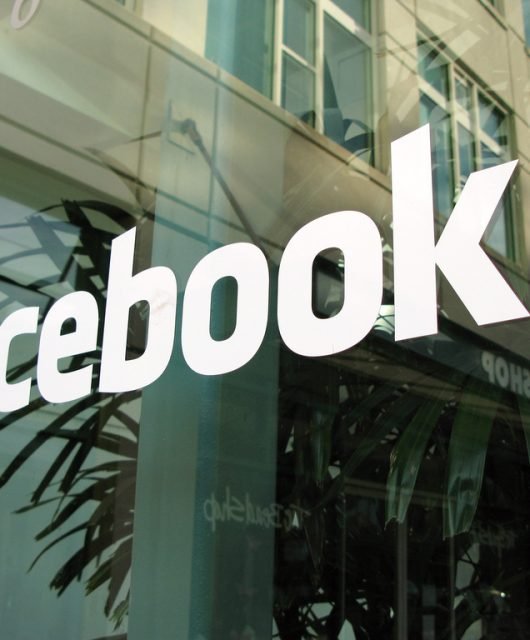Incorporating An eCommerce Strategy Inside The Brand DNA: Q&A With Mona El Sayed
One of the significant business model developments ignited by digital renaissance is the birth of digital marketplaces, professionally known as ‘eCommerce’. The rise of eCommerce has come with an entire evolution to brands’ experiences, market dynamics and consumer empowerment.
The Brandberries has exclusively interviewed Mona El Sayed, Global Brand Consultant and Former Regional Planning Director at JWT Gulf, for her take on how brands can incorporate an eCommerce strategy inside the brand DNA.
BB: The eCommerce market in the Middle East has been on a massive rise, unlocking a wide multitude of opportunities for retail and non-retail brands as well. Can you shed some lights on how ecommerce can be a pivotal growth imperative for businesses?
ME: Every strategy a business chooses to adopt has a corresponding impact on its brand. There are many factors that play a role, but let us assume that this business has a sensible product, somewhat mature brand, positive associations and the potential to grow into something even bigger. Now, should that business opt for ecommerce as a new venture, and should they implement it correctly, it should, without a doubt, have a positive impact on its brand by adding these 4 layers to its brand persona:

- The Friendly Foreigner:
Yes, ecommerce means allowing your clients to access your product through a digital portal, providing much more convenience to those who already love you. Result? Increased share of heart and wallet. But it usually also means leaving the nest and taking the business and brand across the globe via digital borders. By opening up a Global window, ecommerce has not only opened up an entirely new revenue stream but has also given you the opportunity to be loved by anyone across the world. When it comes to brands, controversy in the saying, love is what makes your world go round.
- The Gift Giver
eCommerce, when done right, gives you the most valuable asset on this planet today: Data. Which means, you will know exactly what the consumer wants, so much that you can tailor their brand and product experience, so much that you can predict their next purchase, so much that you can, maybe, one day, incept their next purchase. That puts your brand ahead of any loved one who “knows me so well.” So much that the birthday gift that you present to them online (because data) will be, should be, consistently be, their favorite. The only sad thing I notice everyday about businesses with too much data? Not using it.
- The Efficient Expert
Supply Chain 4.0, have you heard of it? Another word for it is Amazon. It’s faster, more flexible, more granular, more accurate and more efficient. Result? More happy customers. The more micro-segmented your digital supply chain strategy is, the more value to consumers, the more cost and inventory minimized.
- The Darwin Devotee
Simply put, ecommerce makes you relevant. Customers expect your product and brand to be accessible online. “Everybody’s doing it.” In this case, it would be a mistake not to join the flock. Keeping relevant is one of the most difficult tasks for any brand, be it Cadbury (circa 1831), Lego (circa 1939), McDonalds (circa 1948) and the infamous Apple (circa 1976). Take it from them, evolution is key and survival is for the digital-ist.
BB: Global giants like Amazon and eBay were the trailblazers at the forefront of the eCommerce industry, revolutionizing the whole customer experience equation. What does eCommerce mean for consumers? and how it’s reshaping the way consumers engage with brands ?
ME: I’m a planner, so lets throw some stats out shall we? (Source: Statista)
- The total value of global retail ecommerce sales will reach $3.45T in 2019.
- Ecommerce retail sales are expected to account for 13.7% of global retail sales in 2019.
- By 2040, around 95% of all purchases are expected to be via ecommerce.
- There are between 12M to 24M ecommerce sites in the world.
- PayPal had 267M active registered accounts by the fourth quarter of 2018.
By the looks of it, eCommerce means consumers will, one day, opt to never purchase any brand that is available online, offline. It is argued that it is only a matter of time before retail stores become only showrooms for the socialites, supermarkets become only tasters, gas stations become only rest areas – you get the picture. Many believe it will happen because people want convenience, and that is true, but I’ve come to understand that much of the human behavior is guided by the ego vs anything else.
Control. People want to feel like they are in control and that is what ecommerce means to them.
I can buy when I want, from anywhere in the world with 24/7 access. I am not restricted by your store timings. I can compare prices without you even knowing. I can browse without the pressures of store keepers. I can save myself time and I can save myself money. My purchase matters as I can comment so much as to influence other people’s buying decisions.
That kind of control, that power trip, that is what ecommerce means to consumers. In turn, it creates high consumer expectations and with it, tensions within the shopping experience leaving brands constantly trying to solve them, sometimes to get ahead and sometimes just to stay relevant.
BB: What are the considerations brands should consciously be aware of on their road to a successful digital transformation strategy?
ME: Transformation is hard, digital or none but sometimes I feel digital may be even harder. Here’s why:
One of the biggest mistakes businesses make during their transformation strategies is not making it as an important part if not a more important part of the consumer’s path to purchase. Ecommerce must be a part of the entire journey, sometimes only at the start (Amazon reviews) and sometimes at the end (online offers) and sometimes anywhere in between. It needs to be treated as a long-term investment to their consumer journey vs. just another “channel.”
Once you’ve established ecommerce as a vital investment for your business, get the right people to lead it. Put an exclusive team together to take charge. You will face preventions, such as legacy technology that will forever be the comfort zone. That drives resistance to change from employees and without the right people to manage the ecosystem; sales channels will disconnect and discontinue. The right person or team for the job needs to plan it and own it. They are a rare and expensive kind.
Finally, content. Make or break. Offline and online content must never be identical, as consumers have different expectations for different channels BUT they must be in perfect harmony. Get all your content in order, tried and tested, bulletproof before your digital debut. From design to delivery and back. Consumers have high expectations. They have the platform to rip any brand apart for the decisions it makes and they aren’t afraid to let it get ugly. (Remember Kendell and Pepsi? Fun times.)
p.s. be innovative in some part of your ecommerce experience. Focus on solving consumer tensions with ecommerce in your industry. i.e. chatbots, blockchain payment methods, drone deliveries, AR, etc. Invent. No matter how small.
BB: eCommerce is undeniably uprising, however retail technology giant brands, like Samsung, have reported that 90% of the buying decisions still happen in store, which defies the whole concept of the power of eCommerce. Please comment.
ME: The current talk of the town isn’t about brands going from offline to online but the complete opposite.
Fabletics, an online athletic brand co-founded by Kate Hudson, recently announced it will open up to 100 stores. In addition, Birchbox, a subscription-based beauty shop, has recently launched a flagship store in the heart of New York City’s trendy Soho shopping district. Online eyewear retailer Warby Parker, which opened its first store in 2013, will have nearly 100 stores by year-end.
Why?
- Digital natives are now finding that the cost of acquiring new customers online is soaring as competition for eyeballs has increased the cost of online ads on Google and other platforms. At the same time, opening a store has become more affordable as higher mall vacancies have prompted landlords to offer flexible leases and other perks.
- Giving consumers an omni-channel experience gives them the convenience to choose how, where and when they want to purchase your brand. It all goes back to what we spoke about earlier – consumers like to have control. And sometimes, for specific industries, control means hands-on experience with products before purchase.
- Ironically enough, no one knows the consumers’ how, where and when better than ecommerce companies thanks to Big Data. Knowledge IS power, and ecommerce companies are using years of online acquired data to calculate, implement and influence human buying behavior offline. They know the most efficient way to setup, where to open up, when to open up, which products to setup, and how to get the consumer using multiple buying platforms for maximum profit.
Original ecommerce companies might be expanding from clicks to bricks, but rest assured, the power of digital will always play a vital, if not the most vital part of the journey construct,





